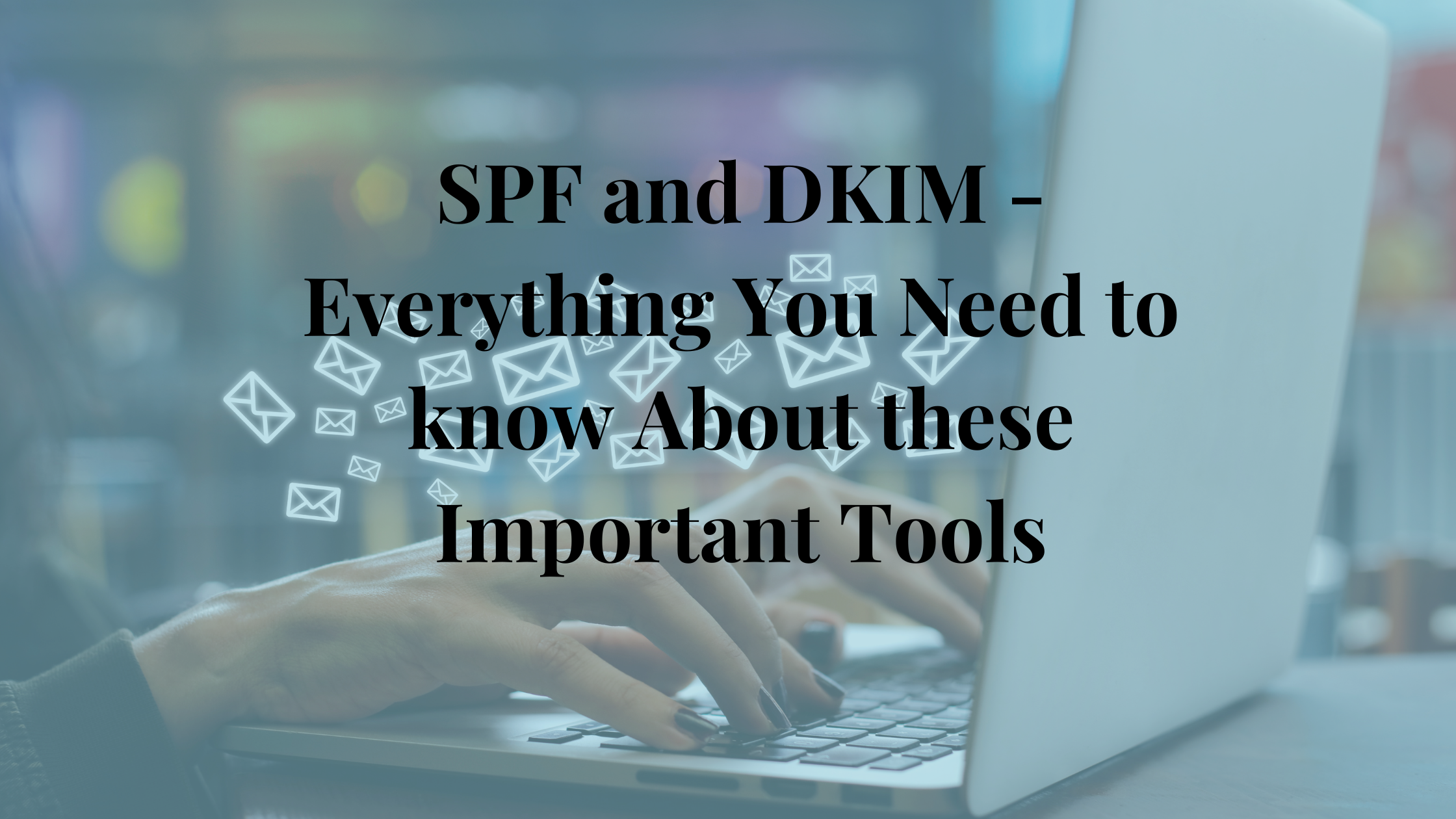
If you know how emails can play an important role in customer acquisition and retention, you’ve probably heard of these tools in regard to email message. You may even know that SPF and DKIM are key components in email authentication and they help protect email senders and recipients from issues like spam, fraud and phishing.
If you want to better understand SPF and DKIM in email, let’s start with some definitions.
What are DKIM and SPF?
SPF is one form of email authentication that defines the process of validating an email sent by an authorized server to detect forgeries and prevent spam. Using SPF protocols, the domain owner can identify exactly which email servers can be sent from. It aids in helping people who are authorized to send emails.
DKIM is another form of email authentication that lets an organization to take accountability for a message in a way that the recipient can verify. DKIM uses “public key cryptography” to ensure that an email is sent from an authorized email server to detect forgery and prevent the delivery of malicious emails such as spam. This further helps the email provider.
Understanding SPF record and how it works
At a basic level, SPF email is a method for receiving servers to verify that email originating from a domain was sent by a host authorized by that domain’s administrators. The following three steps describe how SPF works:
- A domain administrator publishes a policy that defines the mail servers allowed to send emails from that domain. This rule is an SPF record and is listed as part of the domain’s public DNS records.
- When an incoming mail server receives an incoming message, it searches DNS for rules on a Return path domain. The receiving server then compares the email sender’s IP address with the authorized IP addresses specified in the SPF record.
The receiving email server then uses the rules defined in the sending domain’s Spf record to decide whether to accept, reject, or otherwise finally flag the email.
How does DKIM work in email authentication?
Simply put, DKIM works by putting together a digital signature to email headers. This signature can then be verified against the public encryption key in the organization’s DNS record.
Domain owner publishes encryption key. It is specially formatted as a TXT record in the domain’s public DNS record. After an outgoing email server sends a message, the server creates and adds a unique DKIM signature to the message header using DKIM.
Incoming mail servers then use the DKIM key to identify and decrypt the message signature and compare it with the new version. If the given values match, the message can be proven to be authentic and unaltered in transit, and therefore has not been tampered with or tampered with.
You can validate your email address with DKIM Validator. This will help in domain-based message authentication.
Why is authentication alignment important to improve email deliverability?
Using a third-party email service provider (ESP) is a smart investment, but domain name targeting can still be a challenge. Your company will appear as the sender with a single domain name, even if the ESP is sending on your behalf. Your email can still be forwarded even if your domain is not targeted. A flat domain name easily passes through spam filters, improving inbox placement options.
The Importance of SPF and DKIM in spoof mails
If you are a business that sends business or transactional emails, it is important to use both the tools to authenticate emails. Both these protocols protect your business from phishing and phishing attacks, and SPF and DKIM ultimately help safeguard your customer relationships and brand reputation. Remember, these are just a couple of steps one can take to ensure that business-critical emails reach your client’s inboxes punctually and don’t end up in spam folders.
Advantages for the sender in having SPF to control spam
SPF (Sender Policy Framework) is one the DNS record that contains information about servers that are allowed to send emails from a specific domain (eg snov.io). This will enable you to ensure that messages from your domain are sent through mail servers and authorized IP addresses. These can be your servers or the servers of another company that you use to send emails.
If SPF is not set, fraudsters can take advantage of this and send fake messages that look like you. It is important to remember that a domain can have only one SPF record. However, a single SPF record can have multiple servers and IP addresses mentioned (for example, if emails are sent from multiple email platforms). Hence, maintaining email standards is important.
Advantages of having DKIM record for email security
DKIM (DomainKeys Identified Mail) is yet another technical standard that helps identify fake addresses, fight against spam, and prevent fraud and identity theft. DKIM authentication adds a digital signature to the header of your email, which is checked by servers to ensure that the content of the email has not changed. It helps in identifying legitimate emails.
Like SPF, DNS has a DKIM record.
Key differences between SPF and DKIM authentication protocol
Now that you know what SPF and DKIM are let’s talk about their differences. SPF detects IP addresses to determine which senders can send emails to a domain. Instead, DKIM identifies senders who use a digital encryption key to keep email secure. DKIM and SPF both have their advantages and disadvantages. There are differences between DKIM and DMARC as well. When you enable a DMARC record, you have three policy options. These policies tell the receiving server how to treat mail you send that is not DMARC compliant. Note that the recipient server does not need to process mail on request.
Conclusion
In short, SPF allows email senders to specify which IP addresses are allowed to send emails for a given domain. DKIM, on the other hand, gives an encryption key and a digital signature to ensure that an email has not been tampered with or tampered with.
Authentication itself does not prove the value of your content. Use proper email etiquette and good practices when putting in your inbox – spammy content still causes complaints and cancellations, even if it’s authenticated. When these email authentication methods are implemented correctly, you are one step closer to improving your email delivery and sending secure emails that bring revenue to your business. You can use SPF and DKIM for better email deliverability.


